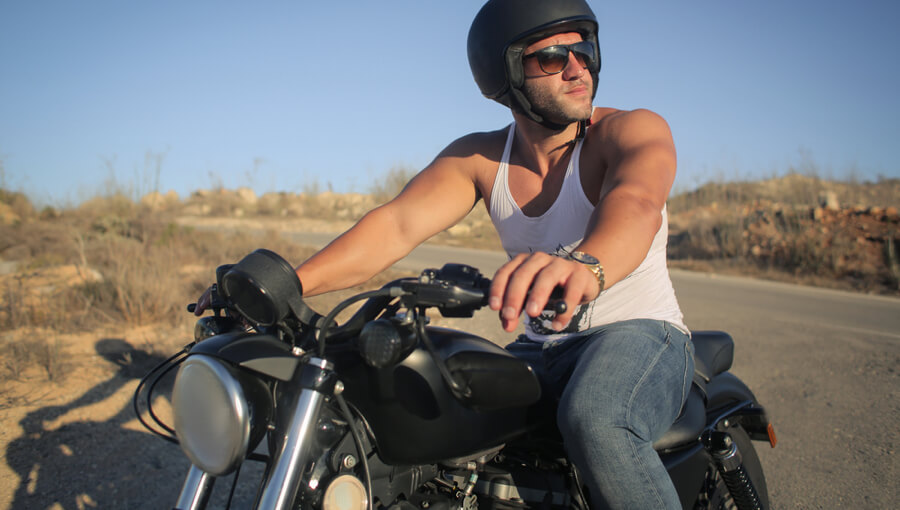October 3, 2021

When I drive my motorcycle, I usually hold the clutch. Whether it is on ramps or even around turns, it is a usual thing for me. When I am caught into traffic or seeing the red light turn on, I find myself holding into it again. Weird, I may say. I always hit the clutch every time I hit my brake too, or while riding downhill.
I, so as many motorcycle riders out there, wanted to know if holding the motorcycle’s clutch too often can harm the motorcycle.
Listed below are some of the facts that motorcycle experts have shared to help us clear all the cobwebs we have in mind. Go ahead and check on them if you may.
Holding Clutch in Different Riding Circumstances
1) Holding Clutch When You Stopped
Using the clutch makes us exhausted upon reaching our destination. Despite such a challenge, it is important to be mindful of the clutch when we are on the road. When caught in terrible traffic, we simply hold the clutch and set our bikes in the first gear. That being said, we make ourselves always ready to hit the remaining miles as the green light turns on.
Another thing, we can immediately move our bikes forward by releasing the clutch whenever we perceive danger behind us. But then, it makes us more vulnerable to accidents if we lose track of the clutch.
Experts discourage us from using our motocycle’s clutch recklessly. They say that using the clutch scurrilously heats it- causing wear or damage. Though holding it while making a couple of road pauses or while traveling downhill is just totally fine, we must not hit it so hard to the point of burning it out. Unlike clutches in cars, motorcycle clutches are far more tolerant to wear and tear whenever we constantly use them.
2) Holding Clutch When Braking
Brakes keep the motorcycle on its appropriate speed. We can feel the gyroscopic effect as we step on them. Yet, when we hold the brake along with the clutch, the effect is lesser. Our bikes become less stable too.
Holding the clutch along with brakes is not a good idea. Instead, slow the rear wheel down by using the brake. It enables the engine to slow down and downshift smoothly without hitting the clutch. Let the engine slow the back wheel and add up to the so-called “gyroscopic effect” into it. Here’s the catch. The rear wheel’s resistance to the road provides our motorcycles with the stability it needs to maintain speed and keep a safe distance.
3) Holding Clutch When Riding Downhill
There is no need to worry about harming the motorcycle when we hold the clutch while riding downhill. When traveling downhill, our motorcycles will only roll down on its own.
By holding the clutch while paddling downhill, coasting is never a problem. The motorcycle moves as long as you run its engine. We can set the engine in neutral or coast with a clutch. Either way is fine. But have a little caution when driving downhill. Don’t go too fast. Make sure to check your brakes as well.
Here’s another thing to remember. Too much heat can damage your brakes. As much as possible, refrain from hitting it so hard. When traveling downhill, the possibility of a damaged brake is high. So be extra careful.
When the clutch is out, engine braking helps. We can regulate our speed when traveling downhill through using engine braking system. Let me say it again, though. Avoid the red line, though.
Most riders of fuel injected motorcycles don’t use fuel when traveling downhill. They turn off their bike’s fuel. It’s alright. But then, be prepared to turn the engine on and get ready to traverse a big steep hill. Expect an uphill after you went on the downhill.
Unfortunately, holding the clutch when riding at a slower speed on hills builds up heat on the clutch itself. Use the brakes instead.
What Are The Common Clutch Wears Based on Clutch Type?
First thing first. Check your bike’s clutch-type. The problem depends on this aspect. Most commonly, bike clutches are run in oil. These are wet clutches. However, some bikes use dry clutches similar to those in cars. Regardless of its type, holding the clutch’s lever and cable for a long time can cause tension and other damages to it.
In detail, dry clutches have throw-out bearing or thrust bearing. It wipes against the plate fingers’ pressure. Wet clutches, on the other hand, have rods that push against the clutch pack.
Also, wet bike clutches always give the bike a “drag feel” simply because its wet friction plates are never fully separated. So when setting on first gear, these bikes have a powerful clunk. This causes friction, the tension on chains, and added stress on oil. Therefore, possible damage is to be expected in the long run.
Therefore, set the bike to neutral most, especially if you are stopping or waiting in a queue by the red light.
